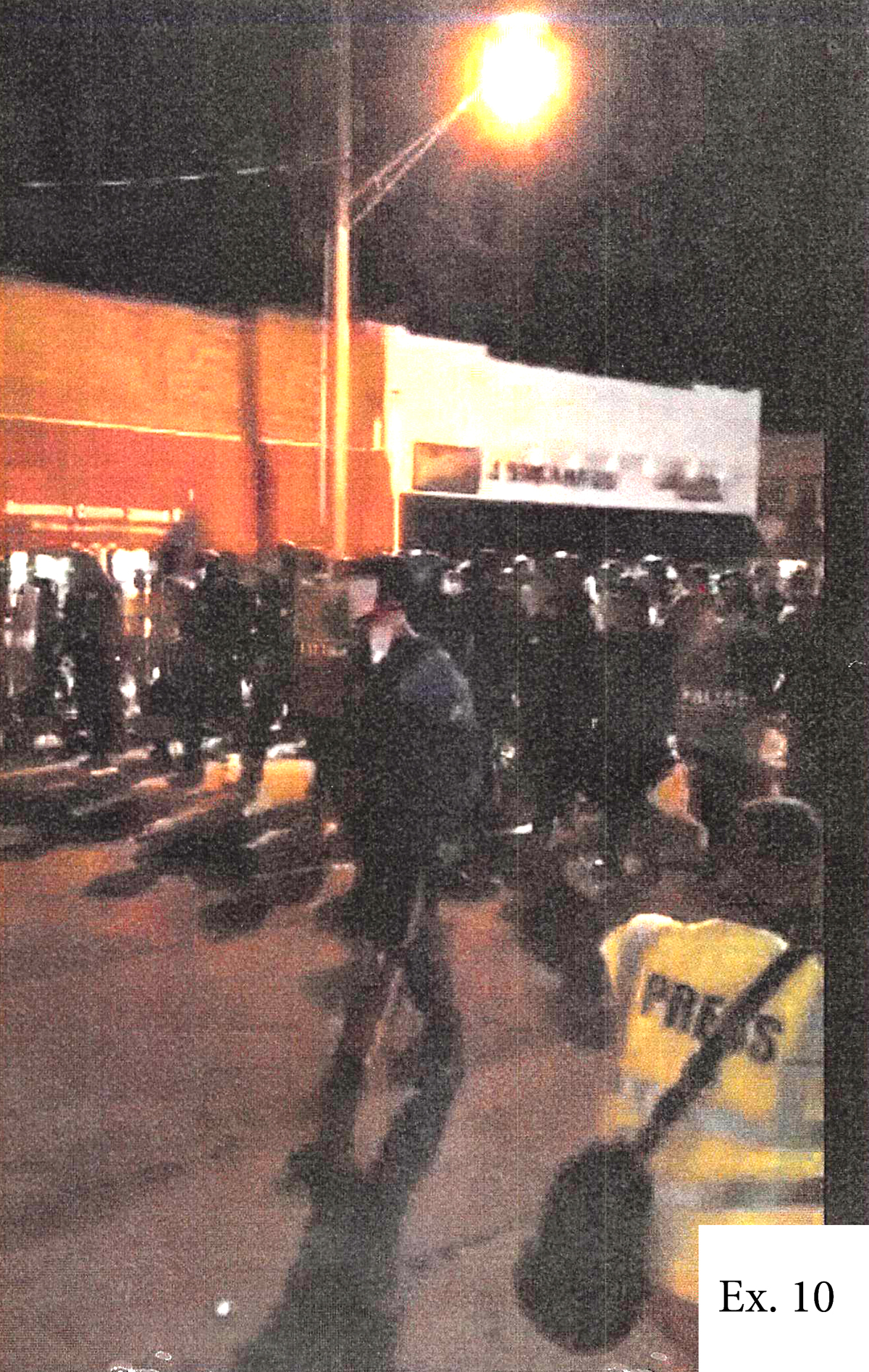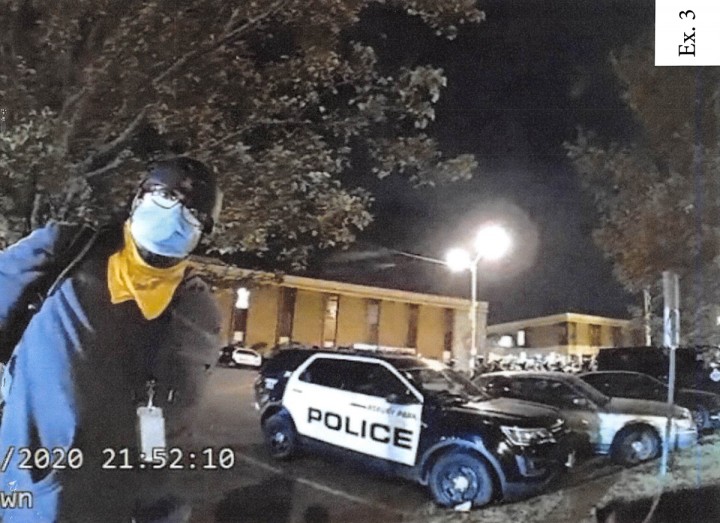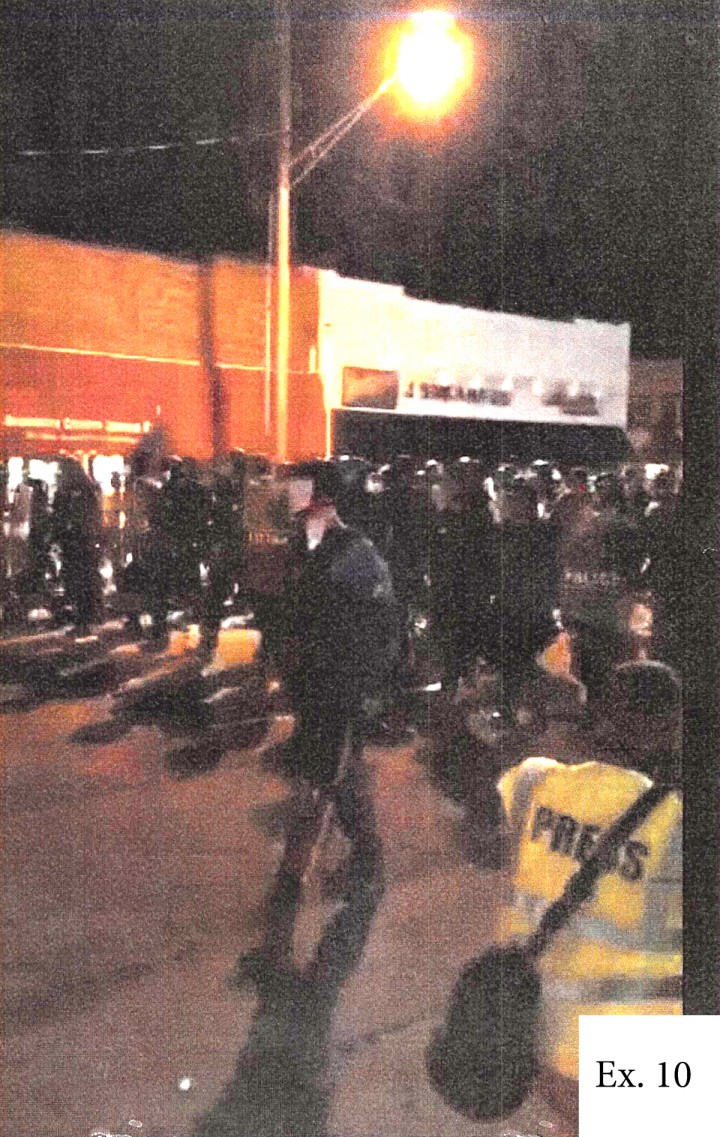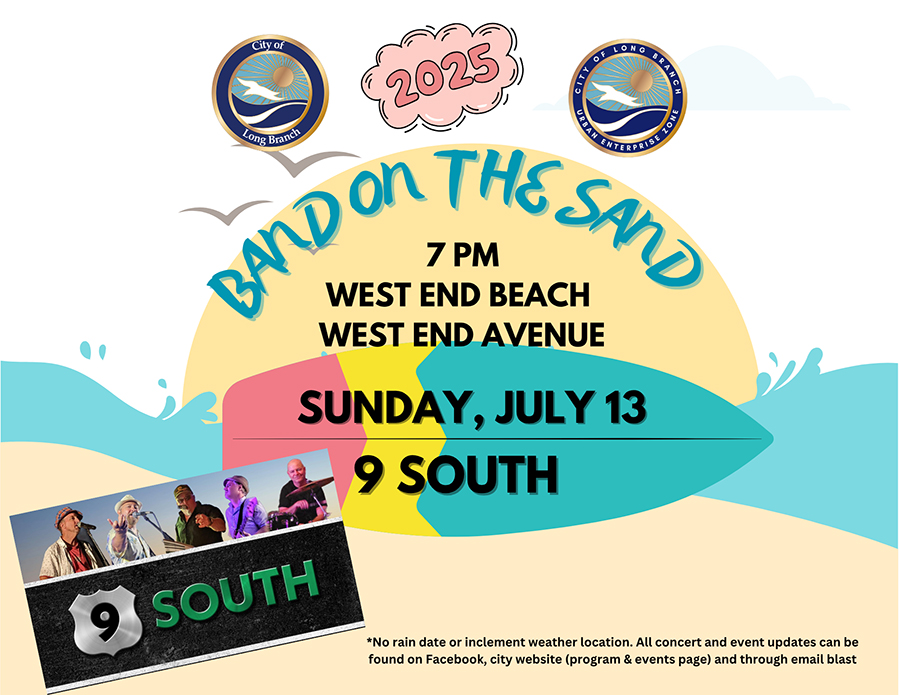Louisiana-based Brinkman heading to Monmouth Sunday
July 11, 2020Long Branch Library updated schedule
July 12, 2020FREEHOLD – A comprehensive internal affairs investigation into the June 1, 2020 arrest of Asbury Park Press (APP) reporter Gustavo Martinez has determined that arresting officers had no knowledge they were apprehending a reporter, announced Monmouth County Prosecutor Christopher J. Gramiccioni.
The investigation consisted of the interviews of 21 people, including 14 law enforcement officers and Martinez, and review of body worn camera (BWC) footage and social media footage captured during the protest. The investigation revealed that the officers who arrested Martinez reasonably believed he was one of the protestors who failed to disperse, despite repeated orders to do so, more than two hours after the expiration of a city-wide curfew. “We fully support and embrace the First Amendment protections that journalists’ have to report the news. Our investigative findings are in no way inconsistent with those important constitutional safeguards,” said Gramiccioni. A summary of the investigations findings are outlined below. (This investigation was undertaken not because of any direct complaint filed against any individual officer, but due to a number of broader citizen inquiries into the arrest of a journalist the night of the protest. To date, Martinez has not filed a formal complaint against any of the officers involved with either our Office or the Asbury Park Police Department. Because the officers involved are exonerated, their identities are not disclosed. Moreover, since the conduct of the officers was reasonable and warrants no discipline, it would not fall under the purview of AG Directive 2020-5 dictating the public disclosure of the identities of officer who commit serious disciplinary violations.)
Ace Hardware for all your needs
June 1, 2020 Peaceful Protest – Asbury Park On June 1, 2020, at 5:00 p.m., a peaceful protest occurred in the City of Asbury Park (“the City”).
Like many nationwide, the protest occurred in the wake of the death of George Floyd, who died while being arrested by members of the Minneapolis Police Department. One hour before the protest was scheduled to take place, the City issued a curfew commencing at 8 p.m. The Emergency Proclamation establishing the protest stated the curfew was being issued because many of the nationwide protests had turned violent. The Emergency Proclamation further indicated that credentialed members of the media were exempt from the city-wide curfew. See Exhibit 1.
The protest was peaceful for the majority of the night. While exact numbers are unknown, it is estimated that several thousand people were present at the height of the protest. Law enforcement officers from throughout Monmouth County and the New Jersey State Police (NJSP) were on hand to ensure the safety of the protest. From the time that the protest ended at 8:00 p.m., until approximately 10 p.m., police officers repeatedly issued verbal orders to protestors via loudspeaker to disburse and leave the area due to the curfew. Most people still lingering in Asbury Park after the protest ended heeded requests to disperse the area in compliance with the curfew.
Violations of Curfew Order
Approximately 200 people refused to comply with officers’ requests to disburse and leave the area as mandated by the 8 p.m. curfew. Officers continued to use public address systems in patrol cars and were giving verbal orders imploring observance of the curfew. In contrast to the peaceful protesters who filled the streets earlier in the evening, multiple accounts paint a far different landscape of those who remained past curfew. Many of the remaining protestors were taunting and threatening officers, were unruly, and some threw water in officers’ faces. At approximately 10:00 p.m., the Monmouth County Rapid Deployment Force (RDF) and the NJSP Mobile Field Force were jointly deployed to disperse the crowd. Officers are heard in BWC footage pleading with protesters to leave the area and go home. Many citizens who had not yet retreated from the streets were filming the chaotic scene on their cell phones.
By approximately 10:16 p.m., the scene had shifted drastically from the earlier peaceful protest to what officers described as a “riot.” Protesters began throwing large rocks, some the size of baseballs, and other objects at officers and at their police vehicles. See Exhibit 2. Police in riot gear were using their shields to protect themselves and fellow officers who were in basic uniforms without enhanced protection. All of the officers who were interviewed described the scene in the same manner as “nerve-wracking,” “dangerous,” “chaotic,” “violent,” and “very scary.” During his interview with our office, Martinez similarly described the scene as “chaotic” and full of “commotion.” At least two officers required medical attention for injuries sustained from the projectiles being thrown by the crowd, one received stitches in his chin due to a laceration and the most seriously injured officer sustained a skull fracture after being hit in the face with a rock.
Press Presence at the Protest & After Curfew
Given the large number of people participating in the Asbury Park protest, as well as the international attention on protests following the death of George Floyd, it is not surprising that the event was heavily covered by members of the press from numerous media outlets. Notably, not all journalists present were readily identifiable as members of the press. While some journalists are seen on BWC and cell phone footage that evening wearing fluorescent vests emboldened with the word “PRESS” visible to all and/or were also carrying large cameras consistent with what news outlets use, not all journalists were easily recognizable as members of the press. Martinez, unfortunately, was one such journalist whose affiliation with a news organization was extremely difficult to discern.
In light of the specific allegations made that necessitated this review – that Martinez was arrested because he was a journalist – it is relevant and necessary to examine whether his profession as a reporter covering this event was directly linked in any manner to his arrest. Martinez told detectives conducting this review that his employer, the APP, assigned him to cover the post-curfew protest from 8:00 p.m. onward. Martinez is observed in BWC footage that night wearing a dark hooded sweatshirt and dark jeans. He was also wearing goggles, a mask, a black helmet and a gray backpack. See Exhibits 3-5. Martinez wore a lanyard around his neck with his press credentials – about the size of a deck of playing cards – that had his picture and the words ‘PRESS’ on one side, and the other side blank with no writing on the back. Martinez was filming the event on his cell phone. When asked by detectives whether his employer provided him with any specific clothing or equipment, Martinez said they did not, but said that his editor did advise him to bring protective gear.
One such encounter, prior to Martinez’s arrest, shows him engaged in dialogue with one officer who is asking protesters to leave the area. The officer calmly engages Martinez in dialogue, believing him to be a protester. During this encounter, Martinez’s lanyard containing his press credentials is seen hanging backwards with the blank side facing outward. See Exhibit 6. 2 Even if the officer deduced from their conversation that Martinez was a member of the press at that earlier point in time, Martinez had contact with multiple police officers later in the evening who were unaware he was a reporter.
The Events Leading Up to the Arrest of Martinez
At 10:22:09 p.m., Martinez is observed on BWC footage near the train tracks on Memorial Drive immersed within the crowd of protesters being walked back by the line of police officers from the Monmouth County RDF and the NJSP Mobile Field Force. Martinez is depicted walking backwards while filming the police officers with his cellular phone. Again, his press credential lanyard is seen on the footage hanging backwards, with the blank side facing outward. See Exhibit 6.
At 10:24:20 p.m., an officer arrests a female on Memorial Drive. A second officer who was nearby the arrest of the female simultaneously is shown arresting a male subject. A third police officer, accompanied by a fourth officer, observed Martinez walking towards the first two officers who were effectuating the arrests, while recording on his cell phone. See Exhibit 6. The third officer, who believed Martinez was a protester, had just ordered Martinez to move from the area. A group of 3-4 protesters, including Martinez, gathered near the arrests. Other officers in the area became concerned for the officer arresting the female because the officer’s back was to the crowd of protesters that was forming, and this was occurring in the general area where rocks had been thrown at police. These events are also confirmed on Martinez’s own cell phone recording that night he posted on Twitter. Moreover, there is no indication that Martinez informed the officers that he was a member of the press when the officers told him to leave. Rather, he continued backing away from the officers making the arrests, while continuing to face them to record. It is at this point that Martinez is arrested, and the interactions of the two officers with Martinez at the time of his arrest lasted approximately one minute.
Review of BWC Footage of the Arrest
The arrest of Martinez was captured on the body worn camera of one of the officers who arrested him. See Exhibit 7. 3 During that encounter, once again, Martinez’s press credentials are backwards, the blank side facing forward. The area is dark, poorly lit, and loud with yelling going on during the melee. Martinez is heard saying something during his arrest, but what he is saying is indiscernible and difficult to hear. Detectives reviewing the footage could only make out that Martinez said “I’m a [inaudible].” Martinez is wearing a mask, is positioned face down, and there is a lot of commotion making hearing his exact words difficult for both the arresting officers and detectives who reviewed the clip multiple times. After Martinez is handcuffed, the officer advises him that he is going to roll him on his side and to get up on his right knee so the officer can help him up. Notably, after being helped to his feet, Martinez never indicates to either officer he is a member of the press. (2 The BWC initially captured video of the encounter due to a recording latency common to the Panasonic Arbitrator BWC. The BWC, however, has pre-event recording function capabilities that captured 30 seconds of video footage prior to the officer’s activation of the recording function on the device. As a result, the BWC footage did not initially capture via audio the interaction between Martinez and the officer. 3 The arrest of Martinez begins on the BWC footage at approximately 10:23:15 and the interaction lasts less than 30 seconds.)
In his reporting, Martinez alleged that his cell phone was purposely knocked out of his hands during the arrest, but the two officers involved contend it fell during the arrest. The BWC footage does not clarify this point, but one officer is seen retrieving the phone and placing it in Martinez’s pocket after Martinez was helped to his feet. See Exhibit 7. Both officers assert they did not know Martinez was a reporter, nor did they ever hear him say that he was with the press. The officers interviewed as a part of this investigation indicated that had they realized that Martinez was a reporter, they likely would have asked him to stand to the side.
After his arrest, Martinez was turned over to other officers, was walked to the transport van and later processed at the Belmar Police Headquarters. Martinez had contact with three officers in the course of being transported to Belmar, but did not indicate to any of them he was a reporter. While being processed in Belmar, Martinez indicated he was a reporter only after an officer took possession of is property, saw his lanyard, and specifically asked Martinez if he worked for the APP. These officers, however, were unaware of the specific circumstances that led to his arrest. Martinez was issued a summons for failing to obey an order to disburse. See Exhibit 8. These charges were dismissed later that same morning. See Exhibit 9.
Investigation of the Arrest of Martinez
Martinez was not arrested because he was a reporter or in an effort to prevent him from performing his job as a member of the press. Rather, Martinez was arrested because police officers believed him to be a protester who had disobeyed numerous orders to disperse more than two hours after the expiration of the curfew. The officers’ beliefs, under the circumstances, were reasonable.
Although we agree that in the interest of justice and in an exercise of our prosecutorial discretion that the dismissal of the summons was appropriate under the circumstances, our investigation also revealed that the officers who arrested acted reasonably in effectuating the arrest. While the city-issued Emergency Proclamation exempted credentialed press from the curfew, it did not create a similar exemption for other laws such as the failure to disburse. See N.J.S.A. §2C:33- 1B. Nor is there a blanket prohibition on the arrest of a reporter.6
The Reporters Committee noted in its article that, “[j]ournalists recording protest activities can increase their chances of First Amendment protection and reduce their risk of arrest by identifying themselves as press, not interfering with law enforcement, and recording from a safe distance, if possible.”7 Additionally, the Tip Sheet prepared for journalists by the Reporters Committee notes, “to avoid being mistaken for a protester, use your best judgment and try not to wear clothing that matches what protesters are wearing (e.g. all black). Also, engage with police before the protest so they know who you are and may be less likely to arrest you.” Importantly, the Tip Sheet also notes, “If police issue a dispersal order or give any other directives, promptly comply and prominently display your press credentials.”
In this case, Martinez was not recognizable to officers at the protest as a reporter due, in large part to his attire and the absence of clearly identifiable press credentials. This is especially apparent when compared to the other journalists seen on BWC footage that night wearing bright neon vests clearly identifying them as reporters. This conclusion in no way seeks to diminish what must have been an unpleasant experience for Martinez. However, in light of what is seemingly standard protocols for journalists covering public protests, and what was exhibited by the majority of journalists from other news outlets covering the event, Martinez was not outfitted with the gear or resources to clearly make his identity known to law enforcement officers that night. Although his credentials may have been appropriate and identifiable when seeking entry to a public building during daylight hours, in combination with this attire, at night in poorly lit areas, they were not sufficient.
We have concluded that the officers who arrested Martinez are exonerated of the allegations that the arrest was made because he was a journalist in an effort to prevent him from reporting. During the course of our investigation, we determined that in two instances BWCs were not activated pursuant to standard operating procedure. These findings in no way limited the ability of the investigative team to reach these conclusions. That aspect of this investigation will be referred back to the Asbury Park Police Department for their review in accordance with their policies and procedures.
The Attorney General’s Office of Public Integrity and Accountability (OPIA) reviewed this IA investigation and agreed with its findings and conclusions. (6 See State v. Lashinsky, 81 N.J. 1, 14-15 (1979) upholding a reporter’s conviction for disorderly persons offense for failure to obey an officer’s order to move away from a serious motor vehicle accident. 7 In Higginbotham v. Sylvester, 741 F. App’x 28 (2d Cir. 2018), a video journalist challenged his arrest, claiming it was in retaliation for recording a protest. The Second Circuit found that no reasonable jury could find that the police had arrested him due to his recording activity as opposed to his reckless endangerment of others.)







